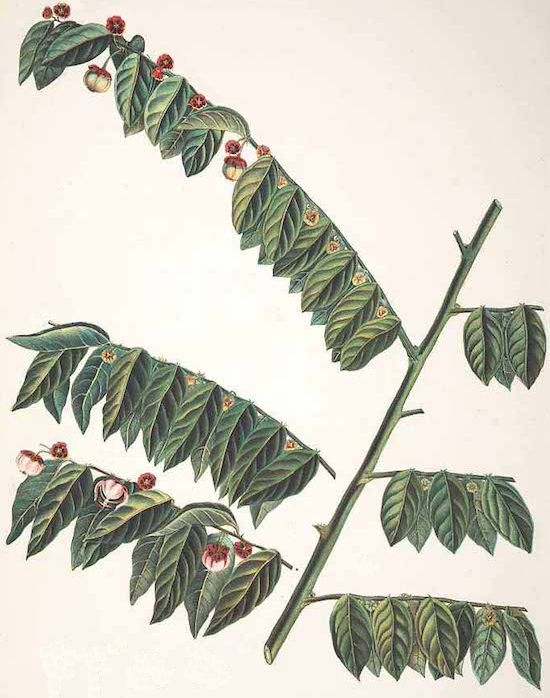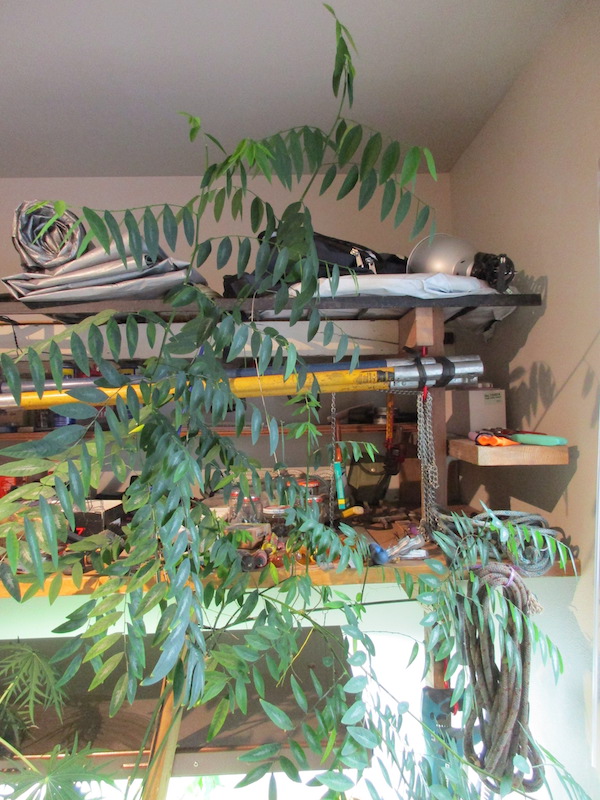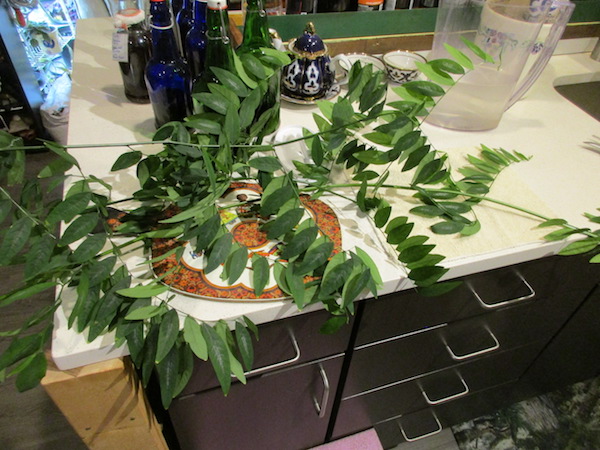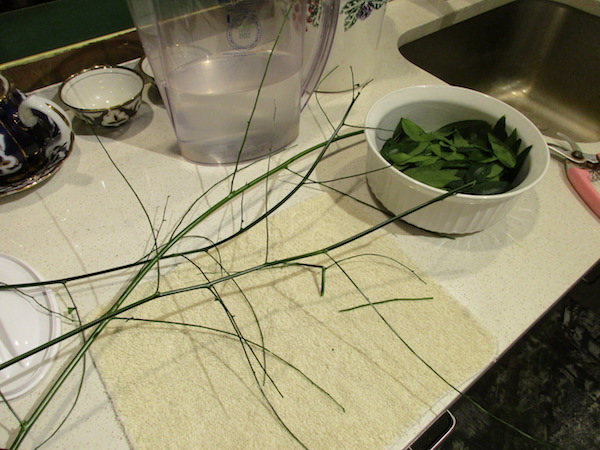Plant of the Month: October 2019
|
| Katuk Sauropus androgynus L.) Merr. |
| = Breynia androgyna (L.) Chakrab. & N.P. Balakr. 2012 |
| = Phyllanthus androgynus (L.) J.A. González 2010 |
PHYLLANTHACEÆ ; Phyllanthus Family
|
| My houseplant collection has included a Katuk plant since July 2011. It is my largest plant. Undeservedly rare in northern cultivation, it needs a plug. Here is a bit of information about it. |
| Sauropus androgynus can also be called Phyllanthus androgynus or Breynia adrogyna. It depends on whether botanists take a narrow (splitting) or broad (lumping) view. "Katuk" is an Indonesian name. |
| Regardless of its preferred scientific name, the Katuk (Katook) plant hails from tropical SE Asia. Other names include: Star Gooseberry. Sweetleaf Bush. Tropical Asparagus. Multivitamin Green. It is a popular vegetable in Vietnam, the Philippines, Malaysia, Thailand, etc. The young shoots are high in protein and R-tocopherol content, with a mild, sweet flavor. The flowers and fruit are also edible. The plant contains a natural sweetener steviocide; dried leaves are added as sweetener to foods. |
| The shrub is not used ornamentally, being no great beauty. But it is one of the most productive, tasty and nutritious green food sources. Excessive eating of the raw leaves can cause pain, and lung damage. I cook the greens, either boiling or in a stir fry. At least 6 other Sauropus species are reported eaten by people. Of them, I have grown and eaten only one: Sauropus spathulifolius. So small (less than 7 inches high), it makes little food, but is easy to fit indoors. |
| My Katuk plant grows in a pot 10.5 inches wide, filled with 7.5 inches of soil. The plant stretches vigorously to the ceiling, then flops. So I stake and tie it. Also I eat the top now and then. I have even pruned it to the base before, then let it regrow. It makes dark green, lush foliage, but does not flower. It gets regular east-facing window light, is kept at about 60% humidity and the temperature varies from 60 to 80 degrees F, usually --rare periods of cooler or hotter do happen. |
| The leaves on my specimen are narrow, hairless, mostly less than 3 inches long, with a silver pattern in the middle. At a certain point they yellow and fall. |
The lovely drawing reproduced below is from Miquel's Choix de plantes rares ou nouvelles, cultivées et dessinées dans le jardin botanique de Buitenzorg 1864. It shows leaves, male and female flowers, and fruit.
Back |

Katuk drawing ; 1864
|

Katuk houseplant in my Seattle apartment ; photo by ALJ
|

Katuk cut for eating ; photo by ALJ
|

Katuk stems after leaves taken to eat ; photo by ALJ
|
|
|

